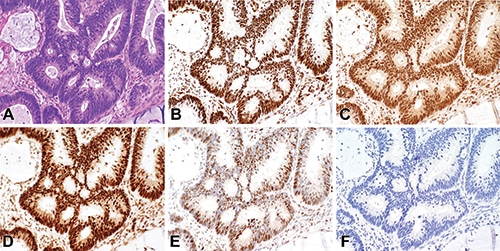December 2018—With the memory of the 2017–2018 “high-severity” influenza season fresh in mind—49 million cases, 960,000 hospitalizations, a marginally effective vaccine, 79,000 deaths—clinical laboratories have been bracing for the customary annual surge in emergency room, outpatient clinic, and physician office influenza test orders. Although flu admissions have been rising somewhat, it is too soon to know how the season will play out, but laboratories are hoping for a season closer to average. Avoiding a repeat of last year’s travails—lengthy turnaround times, supply shortages, and the need to triage patients for testing—is a must, many laboratory directors say. “We had difficulty keeping up with last year’s demand. It was extremely time-consuming,” says Mary Kay O’Connor, national laboratory director at Summit Health Management, the management arm of the Summit Medical Group, an 800-provider practice on the East Coast.
Read More »December 2018
Multiplex for allergy dx: powerful, but it has its place
December 2018—In allergy testing, microarray technology offers speed and the benefit of smaller sample volumes, but it has a lower sensitivity and is unable to detect IgE antibodies of all specificities in a given extract unless all allergens are on the chip. For routine use, singleplex assays are here to stay.
Read More »Could CGM dethrone HbA1c for office-based diabetes care?
December 2018—A glucose sensor the size of a quarter placed on the body and a sensor filament inserted under the skin could potentially disrupt traditional diabetes care with its continuous monitoring of glucose almost 300 times a day. Blood glucose can fluctuate widely during the day even in completely healthy people, said David Sacks, MB, ChB, in an interview with CAP TODAY.
Read More »Program zeroes in on histology, digital scan connection
December 2018—Quality in histology is at the heart of successful whole slide imaging, and a new program that rolls out in January will provide laboratories the aid they may need as they bring whole slide imaging on board.
Read More »Drug overdose deaths and toxicology tests: Let’s talk
December 2018—Drug overdose deaths in the United States continue to rise, and recently many of these deaths have been attributed to opioids, including fentanyl, fentanyl analogs, and other opioid receptor agonists. The rise in drug overdoses and drug-related deaths, and the devastating effects of the opioid crisis, highlight the need for communication and coordination among forensic pathologists, hospital clinicians, and laboratorians.
Read More »Higher pay for fibrinolysins interpretation in ’19 fee schedule
December 2018—The CMS finalized its 2019 Medicare physician fee schedule and its response to the CAP’s recommendations to raise payment for fibrinolysins interpretation and reporting and to forgo a proposed decrease to the physician work value for blood smear interpretation. The Centers for Medicare and Medicaid Services on Nov. 1 published the 2019 physician fee schedule. Services on the physician fee schedule are composed of three relative value units designated by the CMS: physician work, practice expense, and malpractice liability RVUs. Each RVU is separately valued and summed to equal the total RVU for each physician service on the fee schedule. The CAP advocates for the appropriate valuation of pathology services through its representation on the advisory committee of the AMA/Specialty Society Relative Value Scale Update Committee, known as RUC.
Read More »Urinalysis instrumentation: All eyes on standardized, scalable, integrated solutions
December 2018—On page 36 begins our urinalysis instrumentation product guide. The companies whose analyzers are profiled talked to CAP TODAY writer Valerie Neff Newitt
Read More »AMP case report: Discordant IHC/PCR test results for mismatch repair status in colorectal adenocarcinoma
December 2018—CAP TODAY and the Association for Molecular Pathology have teamed up to bring molecular case reports to CAP TODAY readers. AMP members write the reports using clinical cases from their own practices that show molecular testing’s important role in diagnosis, prognosis, and treatment. The following report comes from Duke University Medical Center. If you would like to submit a case report, please send an email to the AMP at amp@amp.org. For more information about the AMP and all previously published case reports, visit www.amp.org.
Read More »Put It on the Board
Pathologists and population health—
first steps
December 2018—Pathologists and population health—first steps: Pathologists who want to become involved in population health initiatives can take five main steps, say pathologists and laboratory leaders interviewed for an article published online last month in Archives of Pathology & Laboratory Medicine. In “The role of the pathologist in population health,” the authors report on the interviews they conducted and their review of the literature to answer several questions, among them whether pathologists in both large settings and smaller community-based settings can engage in population health (yes), and whether pathologists are in a position to analyze data for population health (“The data are there,” they say, “but getting to the data—and providing meaning out of it—is the hard part”). One of the first steps to becoming involved in any type of population health management activities, the authors write, is to understand the philosophy of the institution’s CEO and senior management.
Q&A column
Q. Can you explain further the revised CAP checklist requirement COM.40850 “LDT and Class I ASR Reporting,” which says to describe the method and performance characteristics in test reports unless the information is available to the clinician in an equivalent format? Read answer. Q. Can we see reactive lymphocytes in the pediatric population (under age two), and can we report them? Read answer.
Read More »Newsbytes
In molecular testing labs, gaps between actual and desirable LIS capabilities
December 2018—Flashback to 2013: Alexis B. Carter, MD, then director of pathology informatics at Emory University Hospital, was contemplating whether other pathology labs nationwide were facing the same challenges managing molecular testing data as she and her colleagues. So she decided to find out. Dr. Carter conducted a survey, and the responses confirmed her suspicions: Most laboratory information systems fall short in providing the infrastructure for complex molecular and genomic testing.
From the President’s Desk: Embracing our future at CAP18
December 2018—The CAP Curriculum Committee chaired by Sarah M. Bean, MD, follows a competency-based model to build an annual meeting program that is practical, prescient, and diverse. The committee is balanced demographically, experientially, and scientifically. Whatever the topic, there is someone who can speak to it.
Read More »Clinical pathology selected abstracts
Prostate cancer screening with PSA test: systematic review and meta-analysis
December 2018—Prostate cancer is the second most common cancer and the fifth leading cause of cancer-associated mortality among men worldwide. The use of serum prostate-specific antigen (PSA) to screen for prostate cancer is intended to detect the cancer at an early stage to reduce overall and disease-specific mortality. However, evidence that PSA screening for prostate cancer saves lives is somewhat lacking. Read More »Anatomic pathology selected abstracts
December 2018—Applying deep convolutional neural networks to diagnostic breast biopsies: The breast stromal microenvironment is a pivotal factor in breast cancer development, growth, and metastases. Although pathologists often detect morphologic changes in stroma by light microscopy, visual classification of such changes is subjective and nonquantitative, limiting its diagnostic utility.
Read More »Molecular pathology selected abstracts
December 2018—Profiling of chromatin-accessibility landscape of primary cancers: The chromatin-accessibility profiles generated in this study by The Cancer Genome Atlas represent the largest pan-cancer effort to characterize the regulatory landscape of human cancers. The study primarily used an assay for transposase-accessible chromatin using sequencing (ATAC-seq).
Read More » CAP TODAY Pathology/Laboratory Medicine/Laboratory Management
CAP TODAY Pathology/Laboratory Medicine/Laboratory Management





